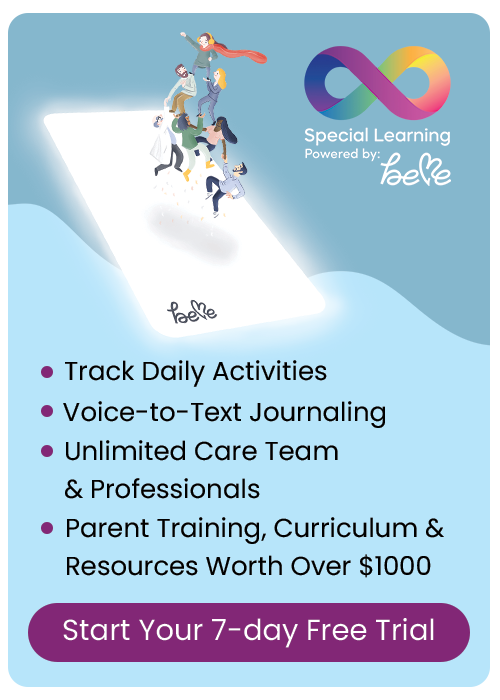Blog Categories
- ADHD
- Applied Behavior Analysis
- Autism Awareness
- Autism Service Providers
- Case Studies
- Dignosis
- Classroom Management
- Credentials
- Ethics
- Family Matters
- FAQs About LIVE Events
- Financial Planning
- Holiday Planning
- IEP's
- Panelists
- Private Equity in Autism & ABA Industry
- Psychopharmacology
- Sensory Processing Disorder
- Speech and Communication
- Subject Matter Experts
- Summer Planning
- Transition Planning
Finding local services and/or applying for benefits for a child with developmental needs
She has worked as a counselor in the Chemical Dependency field, a CPST worker with children/adolescents, a Functional Family Therapist (FFT) with adolescents and their families, a Psychotherapist with dually diagnosed adults and currently works as an LISW who provides case management services for parents of children with Autism.
Leslie graduated from the University of Cincinnati in Ohio with a Master’s in Social Work in June 2006 after completing a 1 year accelerated graduate program. She obtained her Bachelors Degree in Social Work from the University of Cincinnati in June 2005. She obtained her supervision designation in October 2010.
Finding local services and/or applying for benefits for a child with developmental needs
It is not always easy for anyone seeking services for a mental health, physical or developmental issue to find the services that are needed. Once those services are located, it is sometimes even harder for individuals to figure out how to get their individual needs met. One major issue when a person/child is newly diagnosed with a developmental disability, for example, is coming to know which services he/she qualifies for and requires. Once, the parent, for instance, determines the proper services needed, acquiring those services is the most important and, sometimes, painstaking step. This article will briefly address resource needs of children with developmental disabilities and offer basic suggestions on obtaining benefits and finding services.
STEP ONE
“My child has a developmental disability. What do I do now?”
Finding the services for which your child may need and qualify for:
• Contact your local County Board of DD (Formally Board of MR/DD)
o Obtain services through your Co. Board of DD and request to apply for your county’s waiver program (waitlist may vary, but you should get your child on the waitlist)
o Ask what services your child qualifies for (funding for Speech/OT services, in home provider service, etc.
• Contact your local Jobs and Family Services
o Apply for all benefits your child may be eligible to receive.
o Your child may be eligible for Medicaid even if you’re working, especially if he/she has received S.S.I. (Social Security) Benefits. Check with your local Jobs and Family Services to determine income limits and other eligibility requirements.
o Medicaid will typically pay for a certain number of hours for in home help depending on your state. Your child may be eligible to receive additional hours through HealthChek (another Medicaid service) depending on your state. Your county case worker should be able to instruct you on how to access these in home services as well as how to receive the additional hours.
o Transportation to/from doctor or mental health treatment appointments may be available if you meet certain criteria. Mainly, there cannot be any vehicle at the residence even if it is none working.
• Access your county’s Mental Health websites that list local resources such as United Way or your local Department of Mental Health for example.
• Apply for S.S.I benefits for your child on the Social Security Administration website.
o You can apply for benefits by phone, in person at your local office or online.
o Please have behavioral information available as well as identification information like social security numbers, etc. on hand. Additionally, have a list of all doctors, mental health providers and any other professional your child has seen for his diagnosis on hand with contact information, dates of diagnosis and treatments as well as responses to treatment.
o Have a list of all current and past medications on hand.
o Make a list of how your child performs daily living task. You may want to ask your Social Worker or his treatment providers for help with this type of information.
o There is additional specific information that may be requested. You may want to contact Social Security customer service and ask what types of information to have on hand for the initial application and/or interview.
• Make a list and contact local Speech and/or Occupational Therapy Agencies that accept your available funding sources (Medicaid, Private Insurance, County Funding (thru Board of DD)
• Research local agencies/school that serve children with your child’s specific disability as well as what therapies are “Best Practice” for your child’s needs.
o What type of behavioral intervention works best for children with Autism, for example?
o Would an alternative placement fit your child’s needs vs. a traditional school
o Research the Autism Scholarship, for example, in your state to determine if an alternative placement is feasible and/or economical
• Contact your local school or school district and request an IEP meeting to address your child’s specific needs, behaviors, diagnosis and/or treatment requirements and whether or not your child’s school district can meet those needs.
o In some countries school districts may be willing to fund an alternative placement if they are unable to meet the child’s behavioral and/or specific needs.
o This is not typically an option of choice for school districts so be sure to have as much behavioral information and support from additional service providers as possible. Note: School districts and/or county funding agencies differ on their policies and requirements regarding alternative placements.
Be prepared to advocate for your child’s needs and keep detailed records of all your child’s services and service providers. Make sure that every person/agency working with your child are aware and in contact with one another. It is always a good idea to ask for a meeting with all service providers to make sure everyone is aware of your child’s needs, services that are being provided and by whom and needed resources. Many parents have a variety of resources available to them, but they either are unaware of these resources or simply do not access all to which they are entitled. Coordinating your child’s services is much like heading a team. Pulling all of the available resources together may not always be an easy or quick process, but taking the time to do the research and ask the questions are definitely worth it in the long run.
RECOMMENDED PRODUCTS
Historia Social “Pedir un descanso” Plan de Estudios
ADHD Literature Review Webinar: Treatment of Attention-Deficit/Hyperactivity Disorder: Overview of the Evidence (RECORDED)
Strategies to Increase Beginner Classroom Participation Skills: Decreasing Problem Behavior with an FBA Part 1: How to Begin






